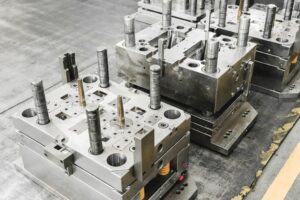One of the
greatest challenges our planet faces is climate change. Greenhouse gas
emissions from human activities continue to worsen the problem as their
consequences become more apparent.
In order to
address this issue, various decarbonization processes have taken place in
different industries, especially in the automotive sector. Through measures
such as adopting electric vehicles, using renewable energy, and implementing
more efficient technology, the goal is to reduce our carbon footprint, creating
a cleaner and more sustainable environment in the long term.
In this
article, we will not only make you aware of the importance of decarbonization
in the automotive industry but also in other sectors. You will discover what
this process entails, the long-term benefits it poses, and the necessary steps
to achieve the objective.
What is
Decarbonization?
In simple
terms, decarbonization is a process that involves reducing or eliminating
carbon dioxide (CO2) emissions, as well as other greenhouse gases, which result
from human activity. The primary aim of this process is to mitigate climate
change and all its associated consequences by opting for low-carbon or entirely
neutral alternatives.
Certain
processes, such as the burning of fossil fuels like coal, oil, or natural gas,
release significant amounts of CO2 into the atmosphere, contributing
significantly to the greenhouse effect and, consequently, global warming.
Therefore,
decarbonization involves transitioning from such fuels to cleaner and renewable
energy sources, including solar, wind, hydroelectric, geothermal, and even
nuclear energy, which contribute minimally or not at all to CO2 emissions.
While this process is not exclusive to the automotive industry, it extends to
other sectors, as we will see later.
Industrial
Decarbonization
Industries
such as construction, livestock, agriculture, manufacturing, and transportation
are largely responsible for greenhouse gas emissions and temperature increases
due to their energy-intensive processes, use of fossil fuels, or harmful
chemicals damaging the ozone layer.
To address
climate change, it is necessary to fulfill international commitments regarding
emission reduction. Additionally, a combination of strategies and key
technologies must be applied to achieve long-term industrial decarbonization:
1. Energy
Efficiency
Decarbonization
and energy transition are essential to reduce CO2 emissions in the industry.
This process involves optimizing production processes, minimizing energy
losses, and adopting more efficient equipment.
2. Use of
Renewable Energy
Many
industries are adopting renewable energy sources such as solar, wind, biomass,
and hydroelectric power. Popular alternatives include installing solar panels
or wind turbines to generate clean energy.
3.
Electrification
Replacing
fossil fuels with electricity is also a trend. Many industrial processes that
once relied on fossil fuels now use technologies like electrolysis and electric
heating, allowing the use of renewable energy while reducing emissions.
Electrification is also present on a smaller scale in sectors like
construction, where electric machinery like lifts, forklifts, and excavators
are being preferred.
4. Circular
Economy and Recycling
A growing
alternative is the transition to a circular economy, where waste and
by-products are reused instead of discarded. This can help reduce pollution and
emissions in the long run by efficiently utilizing materials and resources,
decreasing the need for extracting and producing new products.
Transformation
in the Automotive Sector
Despite
continuous advancements in the efficiency and reduced fuel consumption of
internal combustion engine vehicles, the path to decarbonizing the automotive
sector is one of the most challenging, requiring accelerated adoption of
electric vehicles.
Meeting
emission reduction goals has become challenging due to various external
factors. The automotive industry must contend with inconsistent international
regulatory frameworks and limited access to the raw materials needed for
electric car production, along with a lack of competitive green business
models.
Fortunately,
change is occurring naturally, driven by emission regulations and consumer
demand. Factors such as competitive pricing, high technological integration,
excellent range, and zero emissions, both CO2 and noise, have captured consumer
attention, creating a market that was hard to imagine a few years ago.
The road to decarbonization is complex and filled with challenges, but not impossible. With the increasing demand for electric cars, the adoption of green production processes, and the mentioned measures, we may achieve the goal of decarbonization in the not-so-distant future, not only in the automotive industry but also in other sectors.
There is no
doubt that the planet’s decarbonization process will be arduous and
time-consuming, but it is undoubtedly necessary for our future and that of
future generations. At Walter Pack, we advocate for sustainable and
planet-friendly solutions by opting for highly automated and efficient
machinery and processes.




